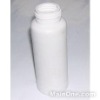Detailed Product Description
herbicide:Glyphosate 41% SL
1.Glyphosate, sold most widely under the trade name Roundup, is applied as a herbicide both after the crop has germinated (post-emergent use) and before seeding (pre-emergent use in low-tillage cultivation). It acts non-selectively, killing a broad spectrum of plants including grasses, perennials and woody plants(3). Glyphosate is absorbed through the leaves and is then transported throughout the plant. It inhibits a metabolic pathway required to form essential amino acids that exist in plants and microorganisms but not in animals(4). Glyphosate is an organophosphonate or salt of a phosphonic acid. It does not inhibit activity of the enzyme acetylcholinesterase (as do organophosphates) that is crucial for transmission of nerve signals in animals and insects(5).
2.Usage:Since its introduction during the mid-seventies, use of glyphosate has increased rapidly(6). In the USA in the years 1997 and 2002 it was among the five most used active ingredients, and second-most used by homeowners and the government or industry(7,8). The recent increase in use is largely due to the introduction of genetically modified (GM) glyphosate-tolerant crops, for example GM soybean in Argentina(9). Expansion in practice of low-tillage has also increased its use(10). Worldwide sales of glyphosate-based products exceeded US$3,000 million in 2002 and the main manufacturer Monsanto expects an increase in 2004 due to increased sales of their products (including Roundup) in Brazil(11,12).
3.Formulations of products based on glyphosate:Most glyphosate-based herbicides are formulated with one or more surfactants. The surfactant spreads the solution across the leaf, penetrates the leaf and enhances the uptake of glyphosate by the plant(13). A class of surfactants known as polyoxyethylene tallowamines (POEA) are used most frequently. These are mixtures of ethoxylated long-chain alkyl amines derived from fatty acids from animals(14) or tall oil (resin from pine wood)(15). Proportions of glyphosate and surfactant have not changed in many products over the last few years (manufacturers material safety data sheets)(16) and despite health concerns POEAs continue to be used, for example in Roundup Ultra(17). Other surfactants are also used, such as alcohol ethers and fatty acid esters18, or biodegradable rapeseed oil derivatives(19). Some glyphosate-based herbicide formulations contain a second active ingredient as several weeds have become resistant to glyphosate(20).













